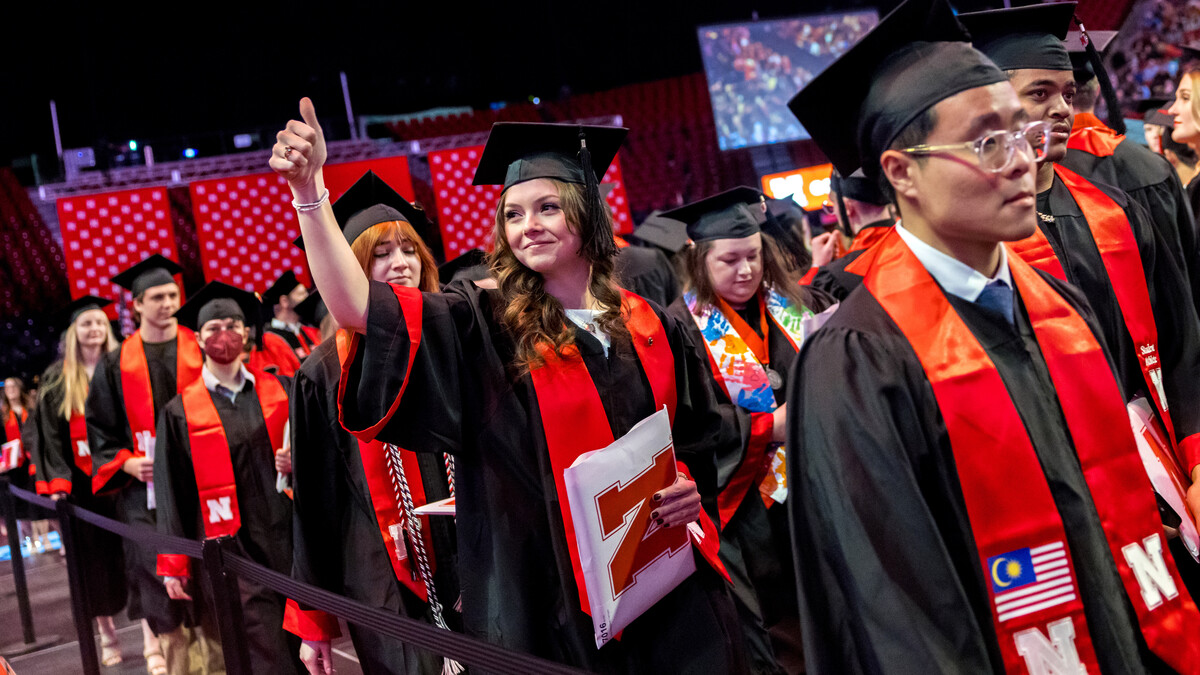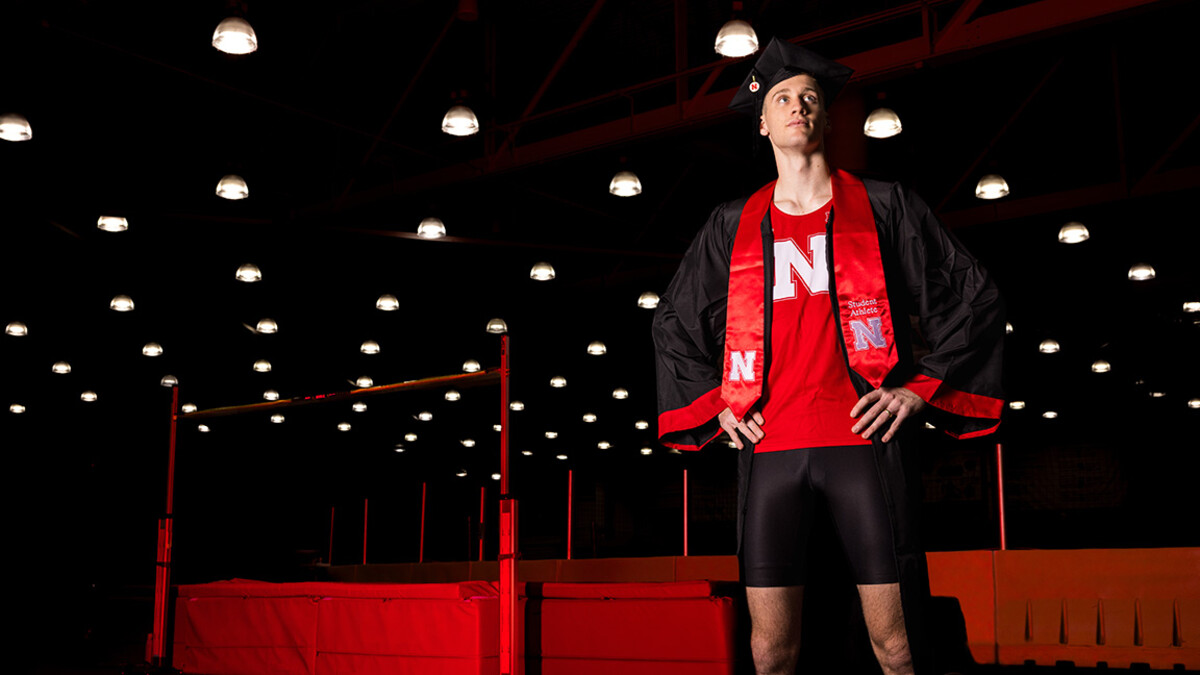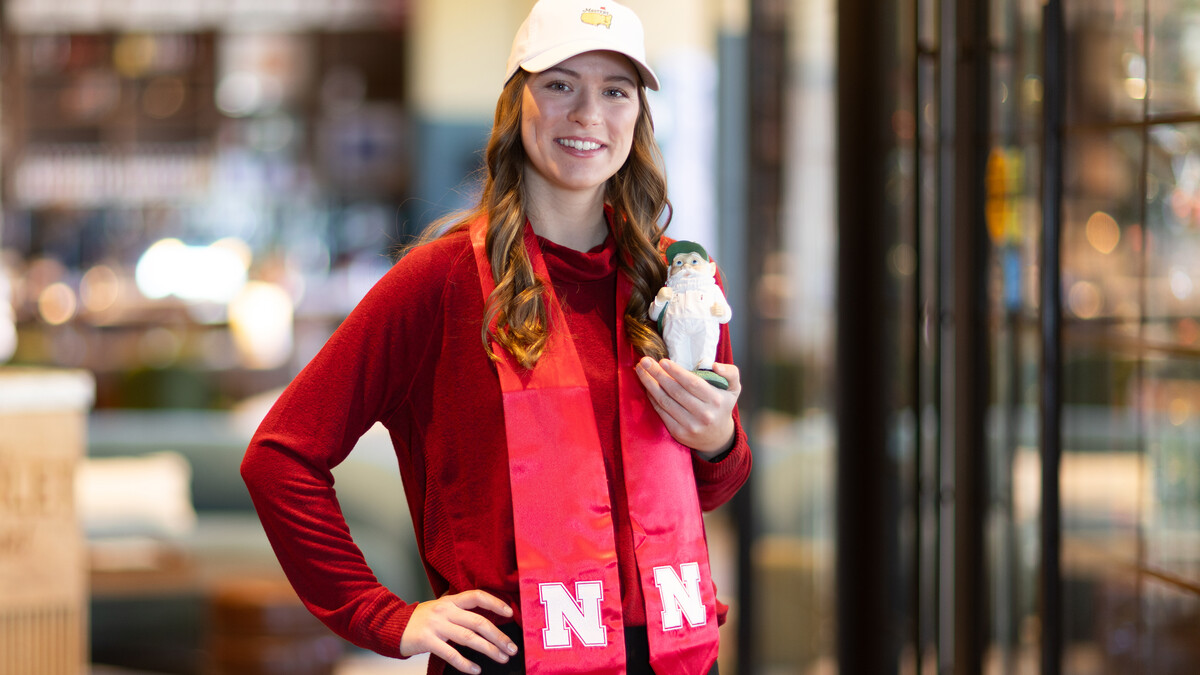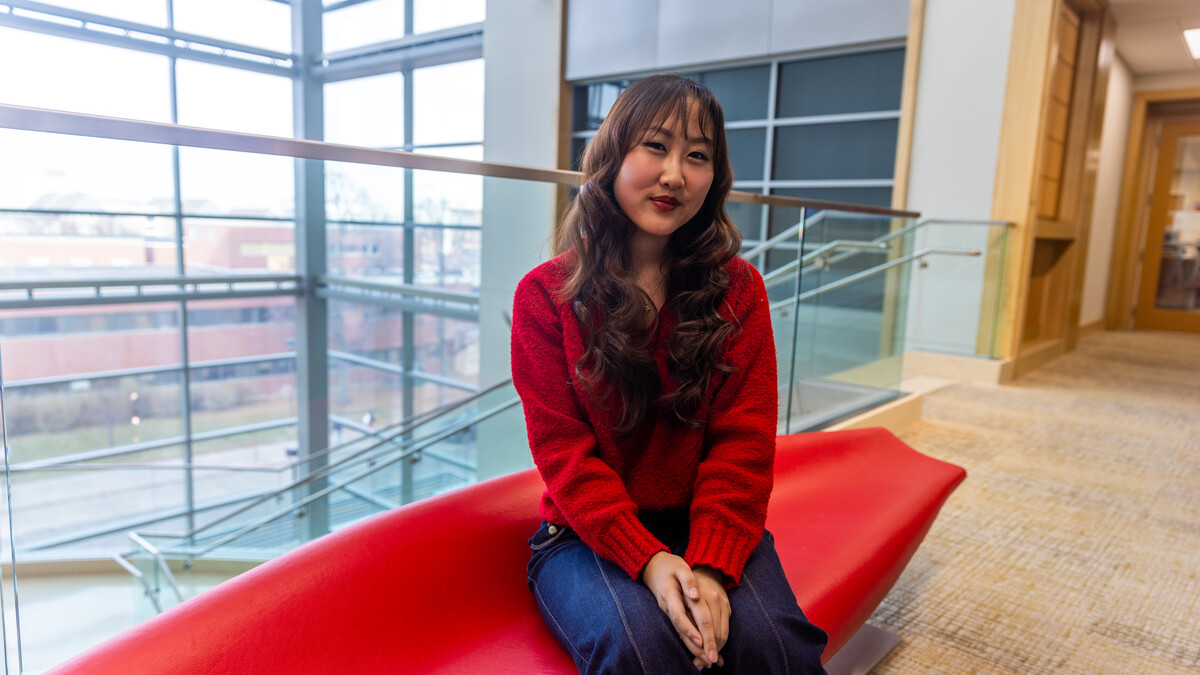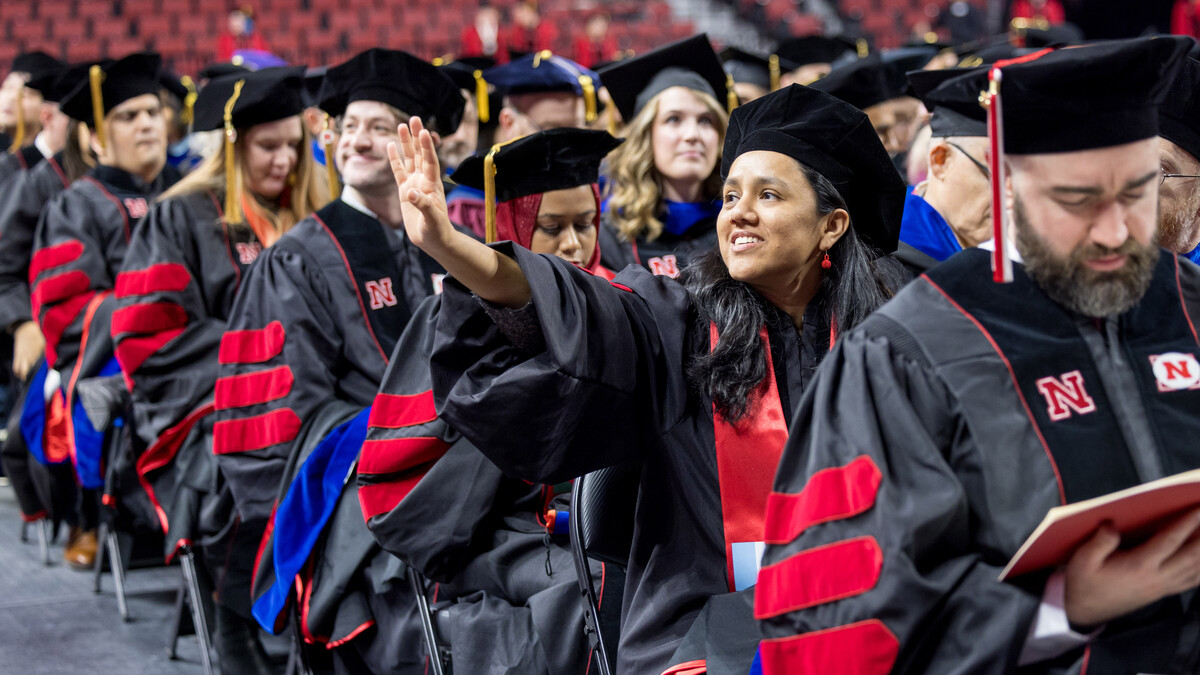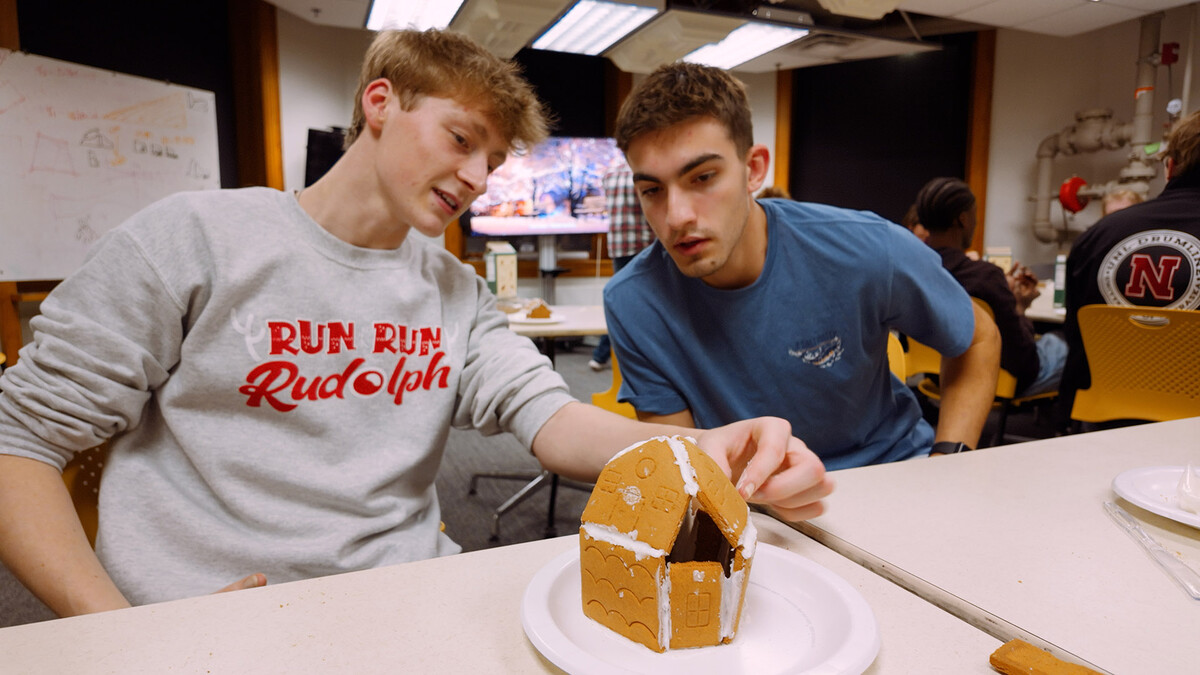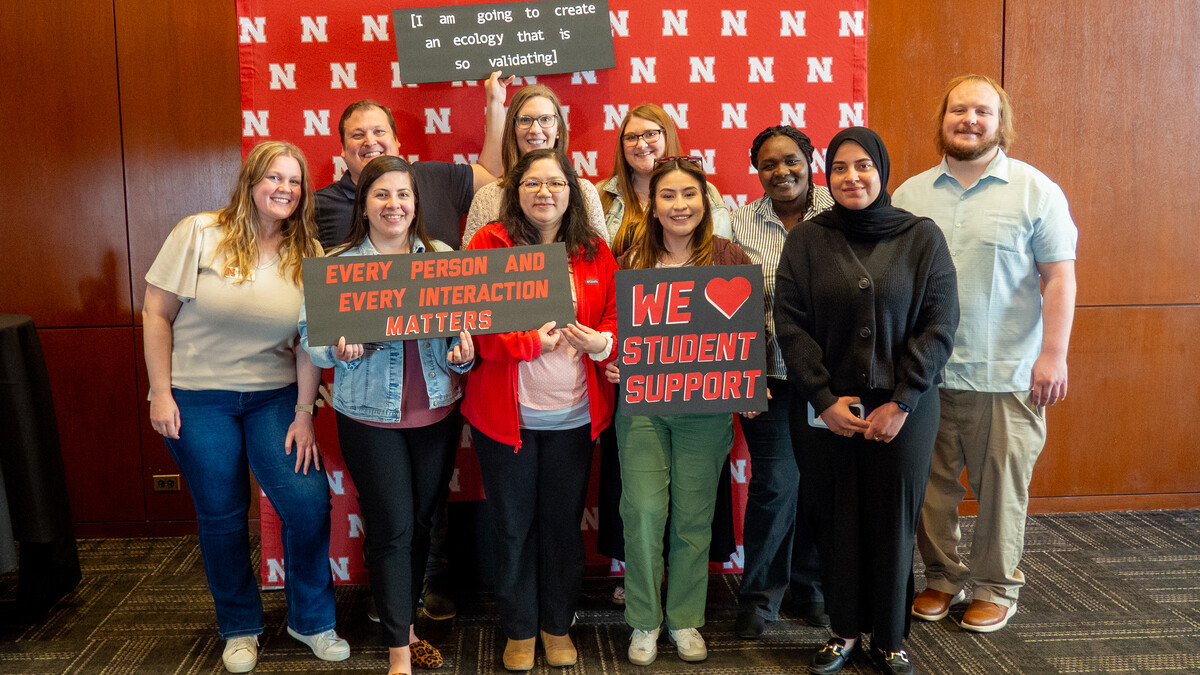
A study on the dangers of microwaving plastic containers, a record-breaking volleyball showcase, an undergraduate’s AI-powered breakthrough and a researcher’s discovery of mummified mice at extreme elevations generated national and international media coverage for the University of Nebraska–Lincoln in 2023. More than 600 positive stories featuring the university, its faculty, staff, students, centers and programs appeared in national media outlets during the year.
- A June study by Kazi Albab Hussain, a doctoral student at Nebraska, and colleagues found that microplastics are released in huge quantities from plastic containers when they’re microwaved. Stories on the research appeared in Bon Appétit, MSN, The Times of India, The Toronto Star, The U.S. Sun, The Weather Channel, WebMD, The Week, WIRED, Yahoo! News and dozens of other media outlets.
- Volleyball Day in Nebraska on Aug. 30 set the world record for largest confirmed crowd at a women’s sporting event, with 92,003 people in attendance. Stories on the event appeared in ABC News, The Athletic, BBC, CBS News, CNN, the Daily Mail, ESPN (1,2), Forbes, FOX News, The Guardian, NBC News, The New York Times, NPR, The Sporting News, Sports Illustrated, USA Today, The Washington Post and numerous other media outlets.
- Luke Farritor, a senior computer science major at Nebraska, won a global contest to read the first text inside a carbonized scroll from the ancient Roman city of Herculaneum. That text had been unreadable since the A.D. 79 eruption of Mount Vesuvius. He developed a machine-learning algorithm that detected the Greek word “purple” on the charred papyrus scroll. Stories on the accomplishment appeared in Ars Technica, BBC, CNN, Gizmodo, The Guardian, MSN, National Geographic, Nature, PC Magazine, People magazine, Popular Science, New Scientist, The New York Times, Scientific American, The Washington Post, Yahoo! News and 100-plus other media outlets.
- Jay Storz, Willa Cather Professor of biological sciences, and colleagues recently uncovered 13 mouse mummies from Andean summits stretching nearly 4 miles above sea level — suggesting that the seemingly modest mice are scaling and somehow living on the Mars-like peaks. Stories on the research appeared in BBC, CNN, Cosmos, the Daily Mail, IFL Science, Metro, Nature, Newsweek, Popular Science, Science, Scientific American, Smithsonian Magazine, The Sydney Morning Herald, The Telegraph and 100-plus other media outlets.

Inventors, innovators and trailblazers
- Congrui (Grace) Jin, assistant professor of civil and environmental engineering, has earned a $175,000 NASA Innovative Advanced Concepts grant to flesh out her idea for growing bricks on Mars. She proposes creating bricks from fungi and cyanobacteria rather than shipping prefabricated materials from Earth. “These self-growing building blocks can later be assembled into various structures, such as floors, walls, partitions and furniture,” she told Engadget. Stories on the research also appeared in KETV, CNN, Gizmodo, Universe Today and WIRED.
- John Benson, associate professor in the School of Natural Resources, and Kyle Dougherty, a doctoral student in the school, co-authored a March study showing that California mountain lions continue to be threatened by human activities despite being classified as specially protected. The multi-institutional research project tracked almost 600 mountain lions in 23 areas of California, assembling separate studies into a single statewide study — a significant methodological advance for strengthening such scientific work. Stories on the project appeared in Earth.com, the Los Angeles Times and 90-plus other media outlets.
- Katie Edwards, professor of educational psychology, and colleagues partnered with tribal organizations, other institutions and community partners to establish and evaluate Peaceful Means, an Indigenous-led center dedicated to preventing sexual violence among youth on the Pine Ridge Reservation in South Dakota. The project received a four-year, $3.2 million grant through the Grand Challenges initiative at Nebraska. Stories on the project appeared in Indian Country Today, KOTA (Rapid City, South Dakota), The Lakota Times (Martin, South Dakota) and the Rapid City Journal.
- A study co-authored by Thomas Kubick, Ellsworth L. Fulk Chair and Professor of Accountancy, was featured in an April 27 Forbes article. The study found that financial executives who experience a significant accounting-related event seem to be more conservative with their accounting moving forward. The study also found that their new companies are less likely to experience an accounting restatement or SEC investigation.
- The university has received a $25 million cooperative agreement award from the U.S. Department of Agriculture for the creation of the Heartland Regional Foods Business Center. The Heartland center — which will serve Nebraska, Missouri, Kansas, Oklahoma and Iowa — is among 12 such national centers the USDA will establish to serve historically underinvested communities across the country. Mary Emery, director of Rural Prosperity Nebraska, discussed the center on a May 9 segment on RFD-TV.
- Brian Vander Ley, associate professor in the School of Veterinary Medicine and Biomedical Sciences and assistant director of the university’s Great Plains Veterinary Educational Center, collaborated with federal and private-sector scientists to produce a calf resistant to the bovine viral diarrhea virus, a highly infectious disease that decades of vaccinations and other precautions have failed to contain. If follow-up research confirms its efficacy, the gene-editing approach offers long-term potential to reduce antimicrobial and antibiotic use in the cattle industry. Stories on the research appeared in Beef magazine, Drovers, Farms.com, Midwest Messenger and RFD-TV.

- With the aid of $3.6 million in funding from the U.S. Army’s Engineer Research and Development Center, research teams at Nebraska and Auburn University are working to safeguard the entry points of military bases against the specific threats posed by hostile-driven electric vehicles. Stories on the research appeared in at least 10 Nebraska media outlets, as well as Military Times and Yahoo! News.
- Annie Madsen, a May doctoral graduate; Daizaburo Shizuka, associate professor of biological sciences; and colleagues published a study in July showing that losing long-lasting flockmates may drive a golden-crowned sparrow to stray from its favorite overwintering spot, suggesting that friendly, familiar faces help anchor it to familiar spaces. Stories on the research appeared in Earth.com, The Wildlife Society and several other media outlets.
- The College of Law established a First Amendment Clinic in August, thanks to a gift from the Stanton Foundation. The clinic supports First Amendment rights by focusing on local and regional cases concerning freedoms of speech, the press, assembly and petition. It also enhances law students’ understanding of the First Amendment and serves as a resource for organizations, students, journalists and citizens defending First Amendment rights. The clinic is led by Director Daniel Gutman and Assistant Director Sydney Hayes. Stories on the clinic appeared in seven Nebraska media outlets, as well as Law.com and The National Jurist’s preLaw.
- Kimberly Tyler, George Holmes University Professor of sociology, has received a five-year, $3.4 million grant from the National Institutes of Health’s National Institute on Drug Abuse to develop a data-driven, app-based just-in-time intervention that provides youth experiencing homelessness with individualized support at critical junctures where alcohol and drug use may be a tempting coping mechanism. Stories on the project appeared in the Norfolk Daily News, Omaha World-Herald and The Center Square.

- An urban heat mapping project led by Salvador Lindquist, assistant professor of landscape architecture at Nebraska, and Keenan Gibbons, a lecturer at the University of Michigan, was featured in an Aug. 31 CNN Business story. The researchers are using drones and other specialized tools to create 3D models of urban streetscapes that allow for thermal comparison. The goal is for these models to be used by landscape architecture firms, companies and even cities to implement solutions to urban heat such as increased tree coverage, lighter pavement, and white or green rooftops.
- James Schnable, Charles O. Gardner Professor of Agronomy, was part of an international research team that created the first complete map of the corn genome. The landmark achievement could enable major long-term advances in crop health, resilience and productivity. Stories on the research appeared in nine Nebraska media outlets, as well as Brownfield Ag News and RFD-TV.
Trusted experts and recognized authorities

- Kelsy Burke, associate professor of sociology, gained media attention in 2023 for her research at the intersection of religion and sexuality. She wrote or co-wrote pieces for The Conversation (Feb. 23 and July 3), Religion News Service (July 7) and The Washington Post (July 27); and was quoted in April articles in The New York Times and The Week. She also published her latest book, “The Pornography Wars: The Past, Present and Future of America’s Obscene Obsession,” in April. It garnered positive reviews in The Atlantic, Los Angeles Times and Los Angeles Review of Books, among other outlets.

- Patrice McMahon, Dean’s Professor of Teaching and Learning in the Department of Political Science and director of the University Honors Program, offered her expertise on international affairs throughout the year. She discussed Ukraine’s challenges related to post-war construction in a Feb. 14 Voice of America article; offered five takeaways on how Poland’s hospitality is helping Ukrainian refugees thrive for a March 2 piece in The Conversation; and explained how Poland’s Oct. 15 parliamentary election dealt a blow to populism and may hold important lessons for reversing democracy’s decline in an Oct. 31 column for The Conversation.
- Husker faculty members assisted with several fact checks on the Lead Stories website throughout the year. The falsehoods they helped dispel included that people need “electric” and “magnetic” foods in their diets (mythbuster Robert Hutkins, food science and technology); that “flesh-eating rain” was falling in Nebraska as a result of a toxic chemical spill in Ohio (mythbuster Al Dutcher, then-associate Nebraska state climatologist); that mRNA vaccines used on animals can cause the involuntary vaccination of humans who eat their meat (mythbuster Eric Weaver, director of the Nebraska Center for Virology); and that there was once an advanced civilization known as the “Tartarian Empire” that was buried in a great “mud flood,” which reset society (mythbuster Bedross Der Matossian, history). Additional fallacies were addressed by law faculty Eric Berger, Kyle Langvardt, Josephine Potuto and Paul Weitzel.
- Qi (Steve) Hu, professor of Earth and atmospheric sciences, was interviewed for a Nov. 10 Scientific American article on whether farmers’ almanacs can be trusted for weather predictions. Two almanacs predicted colder weather and more snowfall this winter than last, but the National Oceanic and Atmospheric Administration said that the northern U.S. would be warmer than usual and the southern U.S. had even odds of cooler, average or warmer weather. “When you have so many things out there, and some of them are in conflict or totally opposite, which ones do you use?” Hu said. The almanacs use statistical weather forecasts, which rely on previously observed connections between variables, making them easy to run but limited by the inherent chaos of the weather system. “That prediction is based on some statistical relationship,” Hu said. “But that relationship may not hold for this year.”
A sampling of other university experts quoted in 2023:
- Kelli Boling, advertising and public relations, February in the Daily Mail, popularity of true crime shows.
- Dawn O. Braithwaite, communication studies, December in AARP, bringing families together with games.
- Jennifer Davidson, economics, March in NewsNation, in-school savings programs.
- Edward Deehan, food science and technology, October in NPR, satiation hormones mimicked by new medications such as Ozempic and Wegovy.
- Thomas Gannon, English, August in The Washington Post and September in The Christian Science Monitor, his new book, “Birding While Indian: A Mixed-Blood Memoir.”
- Roch Gaussoin, agronomy and horticulture, October on “USGA Green Section” podcast, collaborative project to standardize testing of putting green organic matter.
- Jody Green, Nebraska Extension, March in Reader’s Digest, best mattress covers for preventing bed bug infestations; June in CNET, preventing and eliminating fruit fly infestations; October on DW News, Paris’s efforts to combat bed bugs before 2024 Summer Olympics; October in Mashable, preventing bed bug outbreaks.
- Heather Hallen-Adams, food science and technology, June in Tampa Bay Times, products containing mood-altering chemicals from mushroom Amanita muscaria.
- Georgia Jones, nutrition and health sciences, December in Women’s Health, what happens if one eats mold.
- Casey Kelly, communication studies, December in PolitiFact, debunking Vivek Ramaswamy’s claim that “great replacement theory” is part of Democratic Party platform.
- Ciera Kirkpatrick, advertising and public relations, June in Motherly, comparison trap in motherhood.
- Tierney Lorenz, psychology, November in The New York Times, sexual side effects of antidepressants.
- Kate Lyons, biological sciences, January in BBC Future, why giant prehistoric animals got smaller; March in Reuters, study on mammals that underwent “island effect” being at greater risk of extinction.
- Martha Mamo, agronomy and horticulture, February in Civil Eats, sorghum production in Africa.
- Colleen Medill, law, February in The Washington Post, how the NFL has avoided paying disabled players; September in The New York Times, federal laws that protect retirement savings when a company files for bankruptcy or goes out of business.
- Laura Muñoz, history and ethnic studies, September in USA Today, generational language erosion caused by Americanization.
- Charlotte Narjes, Nebraska Cooperative Development Center, October on RFD-TV, center’s work with Nebraska communities to establish co-ops.
- Kendra Ordia, interior design, November in Architectural Digest, creating a healing space for post-surgery recovery.
- Julie Peterson, entomology, May in Knowable magazine, plants engineered to kill insect foes; July in National Geographic, lookalike insect species.
- James Schnable, agronomy and horticulture, December in WIRED, challenges of developing new crop varieties.
- Kevin Smith, political science, December in The Atlantic, his follow-up study showing that politics are still making Americans sick.
- Gerald Steinacher, history, September in The Washington Post, Argentina’s crackdown on Nazi propaganda distribution and antisemitism; September in The New Yorker, Nazi special courts.
- Gary Sullivan, animal science, November in Inverse, the science of ham.
- Dirac Twidwell, agronomy and horticulture, September in The Associated Press, September in All About Birds and December in The New York Times, Eastern red cedars encroaching on Great Plains.
- Dan Uden, School of Natural Resources, April on RFD-TV, Husker researchers working with ranchers to better understand land management in Nebraska Sandhills.
- Frans von der Dunk, space law, January in Mashable, ownership of moon’s ice; March in Daily Beast, commercial space defense; September in Daily Express US, interstellar diplomacy; October on “Tech With Soul” podcast, ownership of a planet; October in The Japan Times, countries competing over space resources.
- Paul Weitzel, law, February in Bloomberg Law, Delaware court ruling that corporate officers can be held accountable by shareholders; November in Reuters, investors in OpenAI considering suing company’s board over firing of CEO Sam Altman, who was later rehired.
- Robert Woody, music, March in Psychology Today, importance of reading music for performing musicians.
University Communication tracks faculty, administration, student and staff appearances in the national media and reports upon them month by month. If you have additions to this list, contact Sean Hagewood, news coordinator, at shagewood2@unl.edu or 402-472-8514. If you have suggestions for national news stories, contact Leslie Reed, public affairs director, at lreed5@unl.edu or 402-472-2059.
